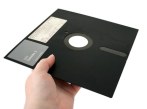Reading the text Educational Leadership and Planning for Technology by Anthony Picciano (2010), was like walking down technology memory lane. Picciano’s text reminds us of how much technology in education has evolved. We no longer think of joysticks and floppy disks as cutting edge technology. In fact, my children will never even know the excitement of sharing a giant Apple computer once a week while playing “Where in the World is Carmen San Diego?”, but that is progress.
I could have never imagined that I would give up my overhead projector for a document camera. I would never have even guessed that my students would have personal devices. All of these changes are good. They are exciting. They are creating opportunities for change. As educators, we need to support this change. We need to allow teachers to take risks and learn along with their students. This is how we can change the classroom today. This is how we can ensure our students are college and career ready. For glimpse at technology of yesteryear visit http://www.edudemic.com/visual-history-classroom-technology/ .

Suzanne you are absolutely right, the book is a walk down memory lane and is a reminder of how far we have come, but also a reminder of the fact that we have no idea of how far we still have to go.
LikeLike
Suzanne I love to remind myself of classic technology as well. Remember the Walkman and what a big deal that was. Now we have IPODs that were originally make to look like the Walkman and are now every shape and design you could think of. Then the CD came along and “changed the world”. The one great thing I like about this book is the anticipation of something new and revolutionary. I haven’t found it yet but it has got to be in that book.
LikeLike
Suzanne, In reading Picciano (2010) I think that what he references as instructional technology, which we now see as dated, is a good reminder that our current technology will soon be dated. Technology companies put out new products every year that transform what we do, making yesterday’s hot tool today’s paper weight. The Chromebook, which is currently the hot instructional commodity, will be replaced by something faster, more portable, and durable and the Chromebook will be put out to pasture.
LikeLike
And now the Sky Mall catalog/company is going away.
LikeLike
Suzanne, you are right…this book takes me back to VHS days along with my floppy discs and walkman. My kids and students will never have used a rotary phone (unless Grandma still has one) or a pager. They have no idea what a pager is for that matter. It’s awesome how far we have come technologically speaking…I mean look at me, the first time I was in college, there were no computers or internet and we had to actually look for books and type our papers on a typewriter or word processor. Hopefully we are educating the next technological genius who will invent the next revolutionary technological tool.
LikeLike
I am with Josh. Reading the book is like slowing as you drive by a car crash on the highway. It could be gruesome, but you cannot look away. The book has added nothing to my activities in the course as I read about laser discs and local video stores where I can get videos to show to my class, but at the same time, I must read on hoping to find some nugget or gem. You all did great at putting some positive light on the book.
LikeLike
I really like your title, Suzanne. How creative! I think the key to unraveling all of this is ensuring that teachers and administrators receive adequate preparation and professional development. The fast pace of technology in the field of education, on social networks, and innovation can be hard to digest all at once unless there are effective structures in place to ensure that educators have practical, hands-on knowledge of these new systems prior to implementation in the classroom.
LikeLike
The book and the education system as a whole lags so far behind our students knowledge and understanding of technology. The students talk about new apps everyday. Unfortunately we don’t often keep up and we definitely are not doing enough to educate our students about responsible use. Far too often what is intended for good can be very misused.
LikeLike